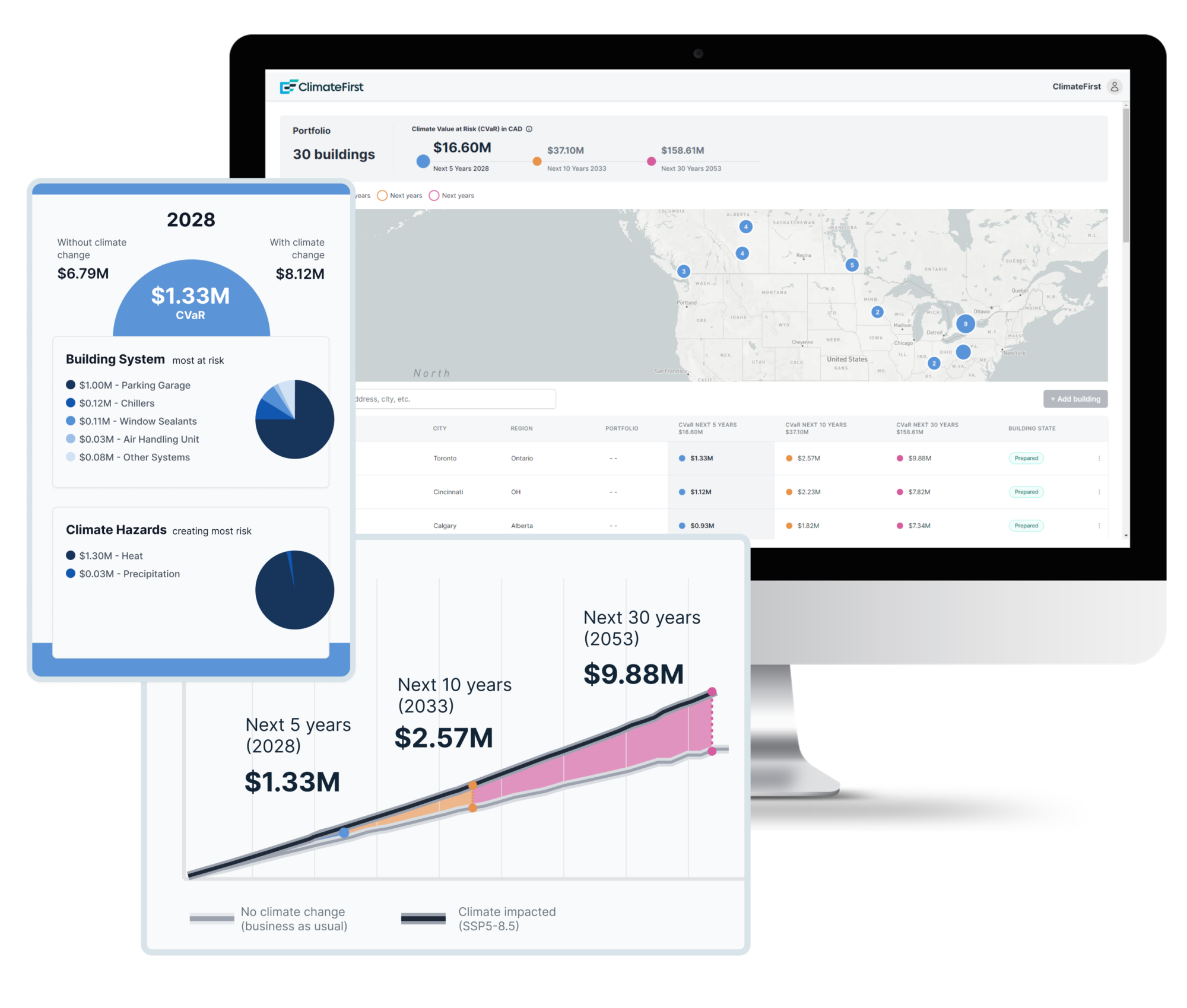A dual-pronged approach that includes sustainability and resiliency is required to offset the economic toll of climate change and address its profound impact on people and the planet.
Addressing the realities of climate change
Recently, our RWDI Ventures book club delved into How to Avoid a Climate Disaster, a book that stresses the urgent need to eliminate carbon emissions. While we wholeheartedly agree with this perspective, we also recognize that the climate catastrophes of the next decade are a fait accompli. (I.e., We need to make the best with what is done.) We are witnessing escalating heatwaves, droughts, wildfires, and hurricanes. And while we can strive to mitigate long-term damage and ideally stabilize conditions, reversing the near-term climate consequences is no longer possible.

To offset the economic toll of climate change and address its profound human impact, our immediate focus must shift to a dual-pronged approach: decarbonization and robust preparedness. And we need to start with the sector at the forefront of this challenge: real estate and the built environment. Responsible for producing 40% of the world’s carbon emissions, buildings hold a dual responsibility. Not only do they contribute to the problem, the also serve as refuge from the very climate events they exacerbate. Therefore, buildings must adapt to withstand new and increasing hazards.
Climate resilience inaction: A paradox
Despite the clear business rationale for investing in the resilience of real estate and infrastructure—with studies indicating that every $1 spent on resiliency prevents $6 in future losses—a mere 5% of climate finance is allocated to resilience. This discrepancy lies in the absence of immediate economic incentives. From insurance premiums favoring climate-resilient investments to real estate valuations reflecting climate risks, stakeholders, including insurers, lenders, and investors, acknowledge climate risk but lack practical tools to convert physical climate risks into quantifiable financial risks.
Beyond climate science: A new approach
While existing models effectively forecast future climate scenarios, they fall short in predicting the specific impacts on infrastructure, buildings, and communities. Addressing this gap requires a new collaborative approach. Climate scientists must provide projections, while building scientists must decipher how structures, not designed for these new climate realities, will endure. Together, they can anticipate when and how critical systems might fail and guide actions today to safeguard our homes and workplaces against future climate impacts.

Seizing the opportunity for a global ripple effect
Thankfully, climate and building science is the very expertise that RWDI was founded on 50+ years ago. We have the specialized expertise necessary to protect our communities from the anticipated climatic changes. The challenge lies in quantitatively linking the costs of physical climate risks to building values, insurance premiums, and investment decisions—and making this approach scalable to address a global issue.
After year-long search for a tool to assist our RWDI clients, and finding none that met the necessary criteria for credibility and scalability, we developed ClimateFirst. This groundbreaking tool merges building and climate science to provide a clear dollar-value of climate change’s impact on a building—and how to mitigate those risks.

Already in use, we believe that ClimateFirst has the potential to trigger a transformative ripple effect across the industry, reshaping building valuations, insurance policies, and maintenance decisions. In the words of Steve Jobs, this is an opportunity “to put a dent in the universe”—in a very positive and impactful way.
If you’re enthusiastic about making a high-impact contribution to this mission, reach out. We’d love to collaborate with you.
